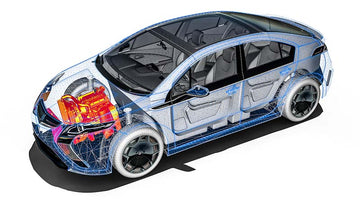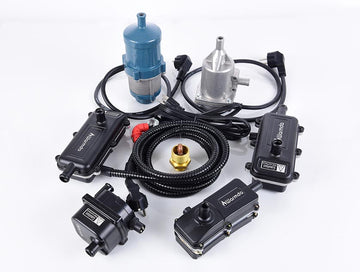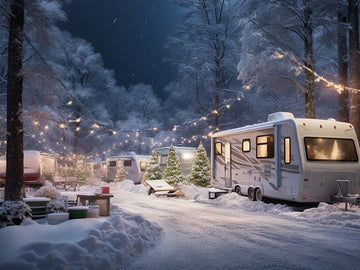Five precautions for diesel heater installation
Nov 24, 2020
The diesel heater market has evolved over the years. It is now easier for you to buy a variety of diesel heaters from different brands at varying prices. But, things can get tricky when it comes to distinguishing the quality of these products. It is not always easy.

There is also the temptation to go for a Chinese diesel heater because of its cheap price. But, then you realize that if you encounter any problem, finding a solution might not be easy. You might even go to the extent of searching for solutions on Google.
Talking of problems, most of the heater failures occurs due to serious issues in the design. It could also be due to the cheap manufacturing process of these heaters.
Even so, you can still reduce the chances of your China diesel heater failing. But, you need to be attentive to the following details below.
Now, let us begin.
1. You can't use a diesel heater in an enclosed space.
During the heater installation, you install the combustion exhaust pipe outside the apartment. This prevents the exhaust fumes from leaking into the room. Over time, the rubber gasket between the heater and the mounting plate deteriorates. This is risky as some of the exhaust fumes may get inside the cabin, which could be hazardous to your health.

Carbon monoxide poisoning is very dangerous. Even more deadly in confined spaces like caravans and car cabins. These enclosed spaces need adequate ventilation to prevent the build-up of toxic gases. So, ensure to leave a gap for the window when you are using an air heater.
Keep in mind that there are many cheap heaters available in the market today. So, you need to consider the reliability of the heater when you are choosing one.
Many users are completely unaware of the dangers that exist with these heaters. In confined spaces such as caravan and truck cabins and ship cabins. We recommend that you should keep adequate ventilation regulations. This will prevent risking carbon monoxide poisoning. Another method is to install a carbon monoxide detector in the room. This will help ensure your safety when using an air heater in confined spaces.
2. After installation, make sure the motor is not ceased.
Depending on the construction of the heater, the heater may cause jostling during the transportation. This can cause the heater core to shift, preventing the impeller from turning.

After installation, turn the impeller by hand
After you have unpacked the heater, turn the heater impeller to make sure it can rotate well. After installation, turn the impeller again to make sure the impeller is not ceased.
If it’s ceased, this is because the four screws at the bottom of the heater are under too much force when fixing the heater to the main unit. As a result, causing the heater housing to move out of place.
3. The heater will have a high-temperature alarm after installation.
The heater has many sensors, especially the temperature sensor. The temperature sensor is on top of the radiator. As the heater works, it measures the combustion of the heater.

The distance between the heater air inlet and the wall is not less than 20 cm 8 inches
When installing the heater, you need to allow a distance of 20 cm (8 inches) or more between the heater and the wall. At this distance, it will allow enough air to get inside the radiator.
If the distance is too short, the heater may set off the high-temperature alarm.
4. Various unusual fault codes for the heater
After installing the heater and you turn it on, the heater will sometimes have uncommon error codes, due to interfacing the heater with other vehicle appliances. This could cause the heater to work in an abnormal way. These errors codes could be missing corresponding solutions in the trouble-shooting list
So, you need to be aware of:
The heater cable must be of the same length for the positive and negative terminals.

The length of the power cord must be the same
You need to connect the power cable to the positive and negative terminals of the battery. The same thing goes for generators. You can’t connect the heater’s firewire to the positive terminal, while negative to the vehicle housing. Some manufacturers such as Victor Industries Ltd. provide very long unnecessary power cords.

Vvkb Heater Cable
Tying up the extra cable randomly may cause the heater to receive electromagnetic interference. This may cause problems.
5. After the heater installation and the heater start-up, there is an indicator that the heater does not fire well enough.
This fault is usually caused by air in the fuel line, and the air can cause an inadequate supply of fuel. This in turn can cause the heater to fail to fire in a proper manner.

After the installation of the heater, you will need to unplug the fuel line from the pump to the heater. After that, start the heater (some heaters have an "auto pump" feature) to allow fuel to come out from the pump and fill in the fuel line without air inside.
Then connect the fuel line back to the heater. If your tank is low on fuel, you will need to do this when you refill it to remove excess air.
You can check our blog for more information. We'll be updating our blog often with various details and notes on heater use.
For any questions, please do feel free to contact us.
We'll usually get back to you within 8 hours.
After the heater installation and the heater start-up, there is an indicator that the heater does not fire well enough.





7 comments
Do you get any condensation from diesel heaters. Are they better installed outside the vehicle / workshop. Thanks.
I’m using a carbon monoxide alarm for safety.
I’m installing a diesel heater in my van build. I know the exhaust must go outside but I wanna leave the intake inside. Is that possible? Any information would be appreciated. This is mainly just because I already drilled a hole for the water intake and I decided not to use it, so if I could use that same hole on the side of my van using a exhaust thu hull skin that would be preferable. More so than drilling a large six inch hole in the bottom of my van.
Thanks